Abstract
Medullary collecting duct function was studied by direct microcatheterization techniques in rats undergoing postobstructive diuresis. Significant net addition of water and sodium to the duct was demonstrated during postobstructive diuresis after relief of 24-h bilateral ureteral ligation. This striking abnormality in function was associated with reduced delivery of sodium and water to the collecting duct compared to sham-operated controls. To examine the role of circulating factors in this phenomenon, another group of rats was studied that underwent 24 h of total urine reinfusion into the femoral vein. Natriuresis and diuresis were similar to the postobstructive group, but absolute collecting duct reabsorption of sodium and water was normal. The natriuresis and diuresis in rats with urine reinfusion resulted from increased delivery of fluid and sodium to the medullary collecting duct. A third group of rats was studied with 24-h unilateral ureteral ligation as well as urine reinfusion from the contralateral normal kidney. Without urine reinfusion there was no diuresis-natriuresis but with urine reinfusion the diuresis and natriuresis after relief of unilateral obstruction was similar to that after relief of bilateral obstruction. Moreover, net addition of sodium and no significant water reabsorption were demonstrated in the medullary collecting duct of such animals. The results indicate that (a) the medullary collecting duct is the critical nephron segment affected by ureteral obstruction, since postobstructive diuresis occurred despite reduced delivery of fluid from the more proximal nephron; (b) the net addition of sodium to the medullary collecting duct observed during postobstructive diuresis is probably a direct effect of obstruction, since it was found during postobstructive diuresis after relief of bilateral or unilateral ureteral ligation, but not with urine reinfusion alone; and (c) blood-borne factors are important in the development of postobstructive natriuresis and diuresis, and probably act by increasing the fraction of filtered sodium and water delivered from the proximal and distal tubule to the collecting duct.
Full text
PDF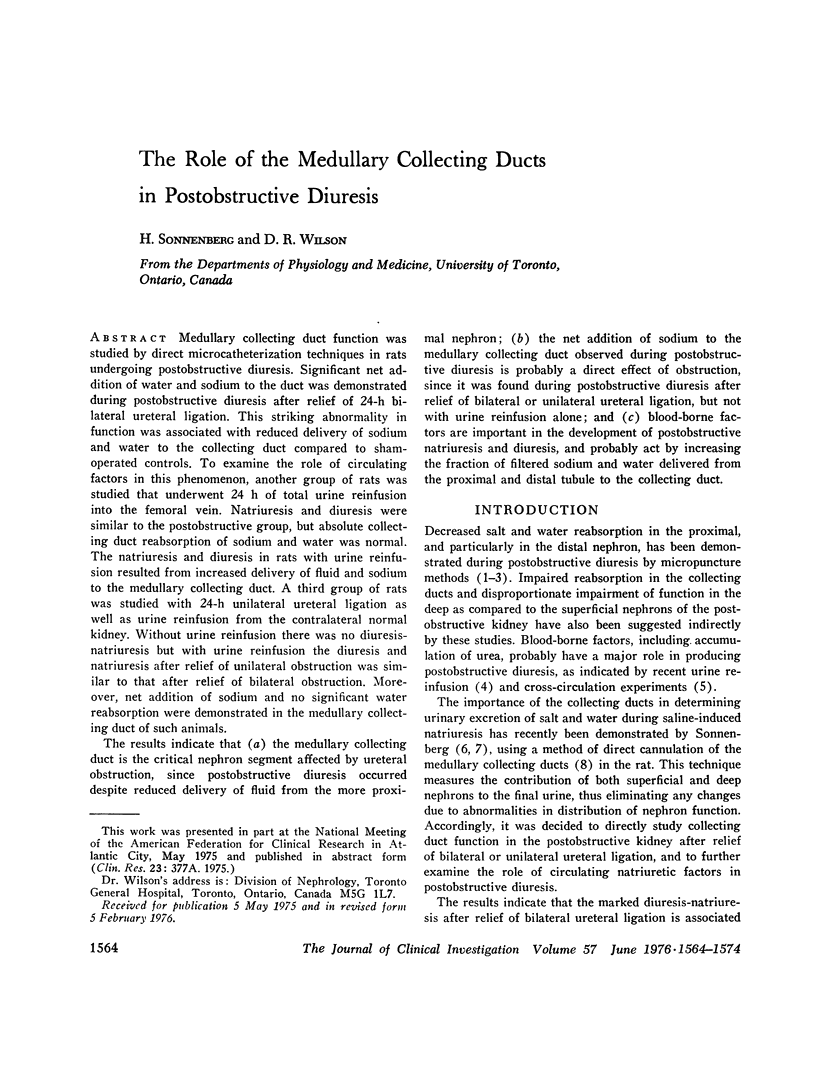
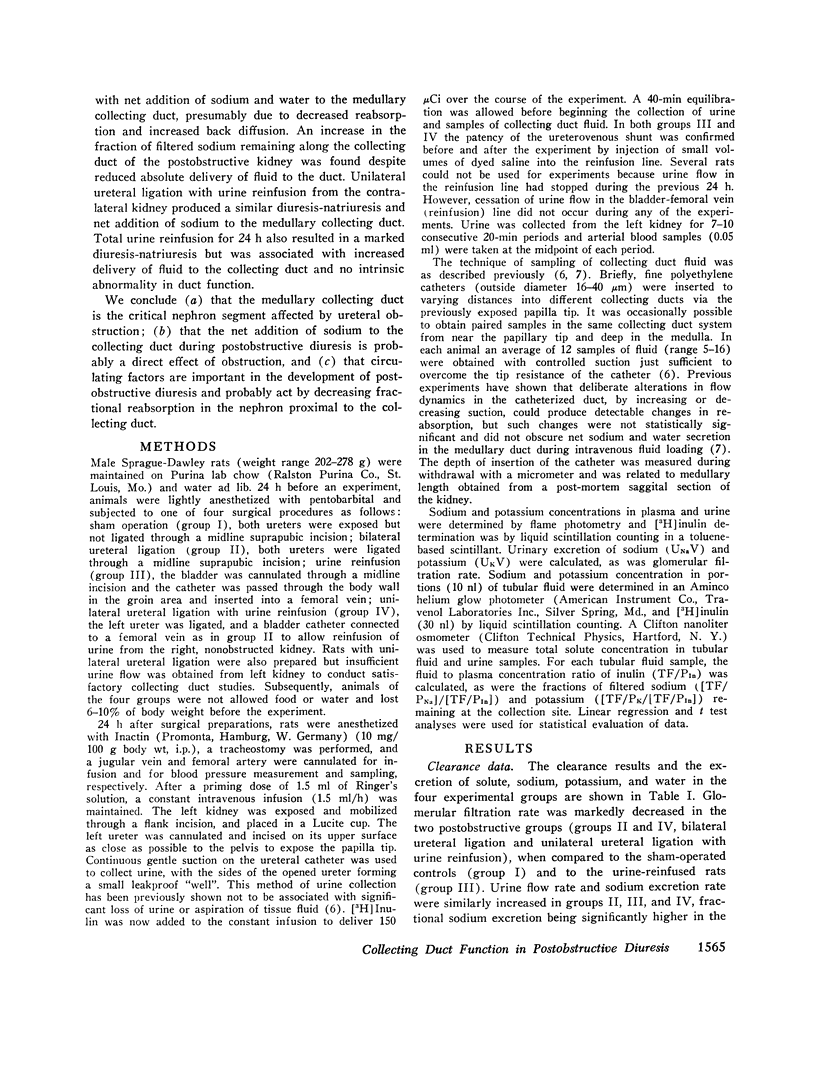
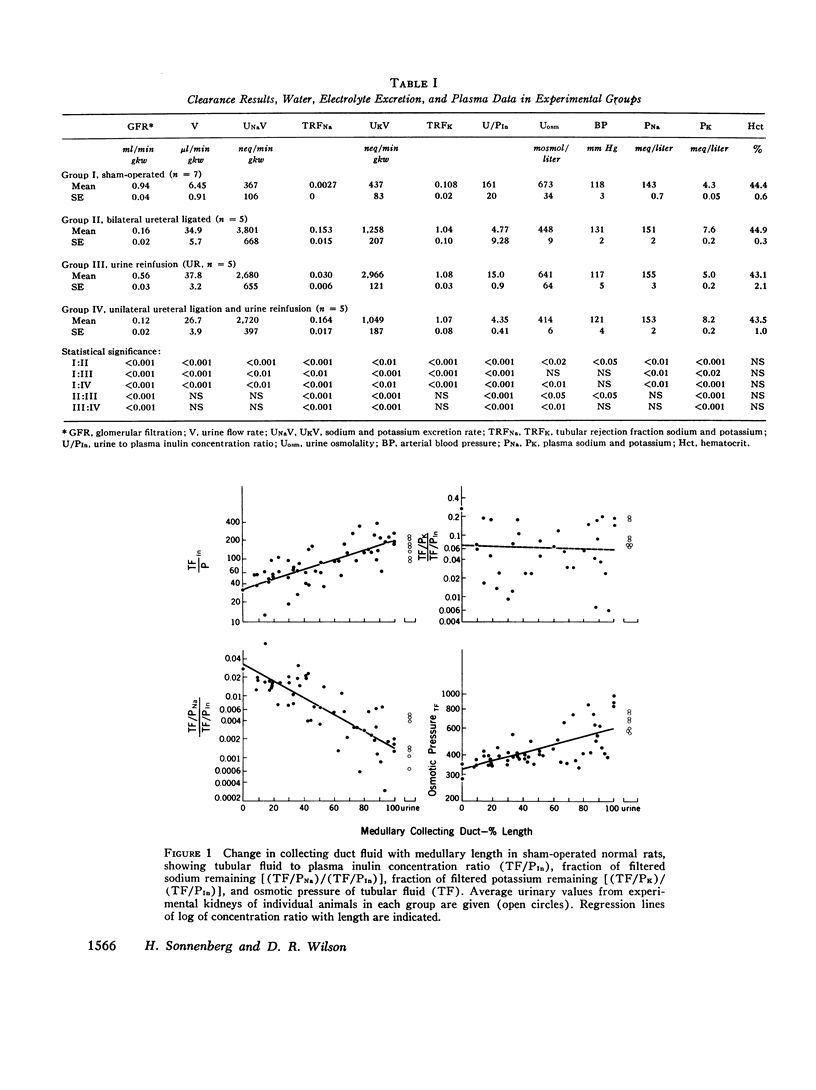
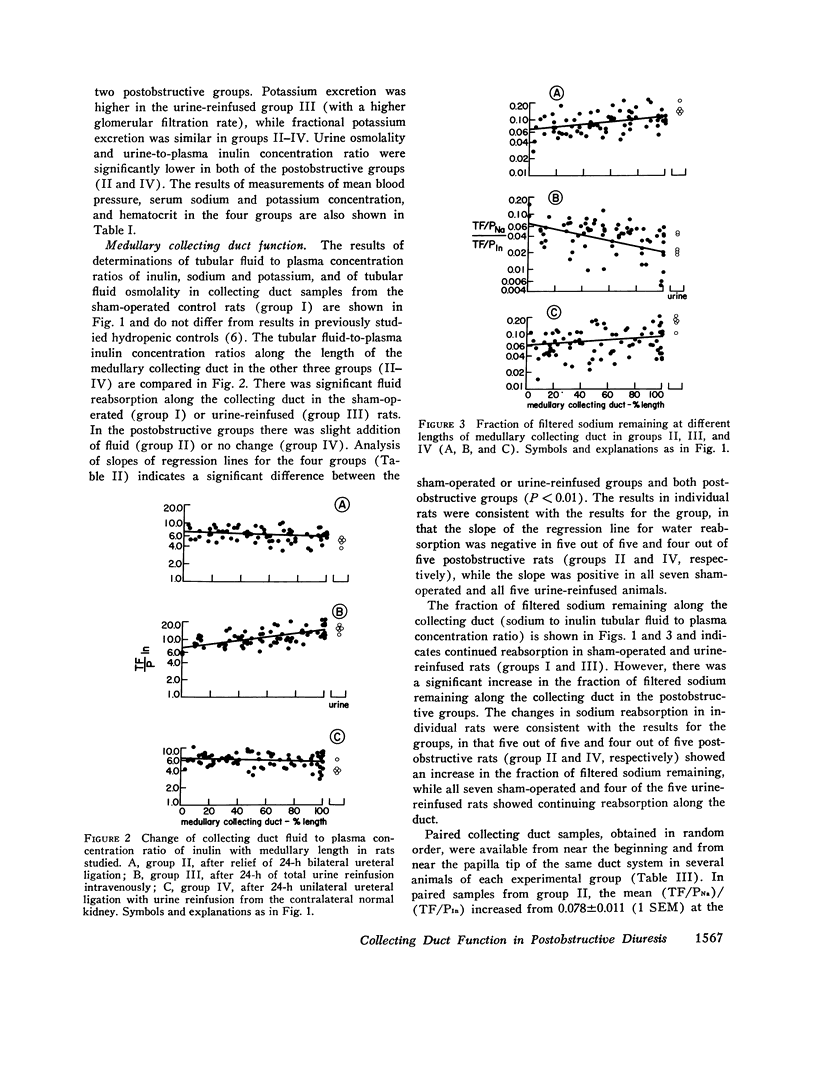
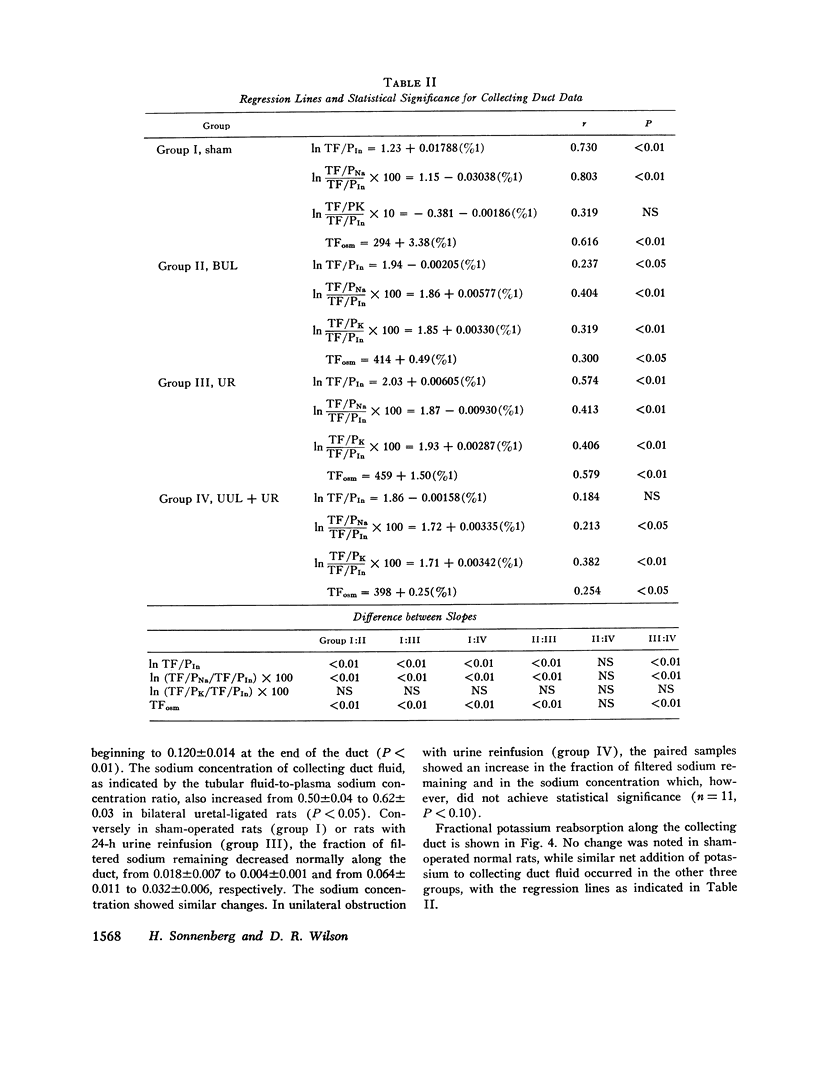
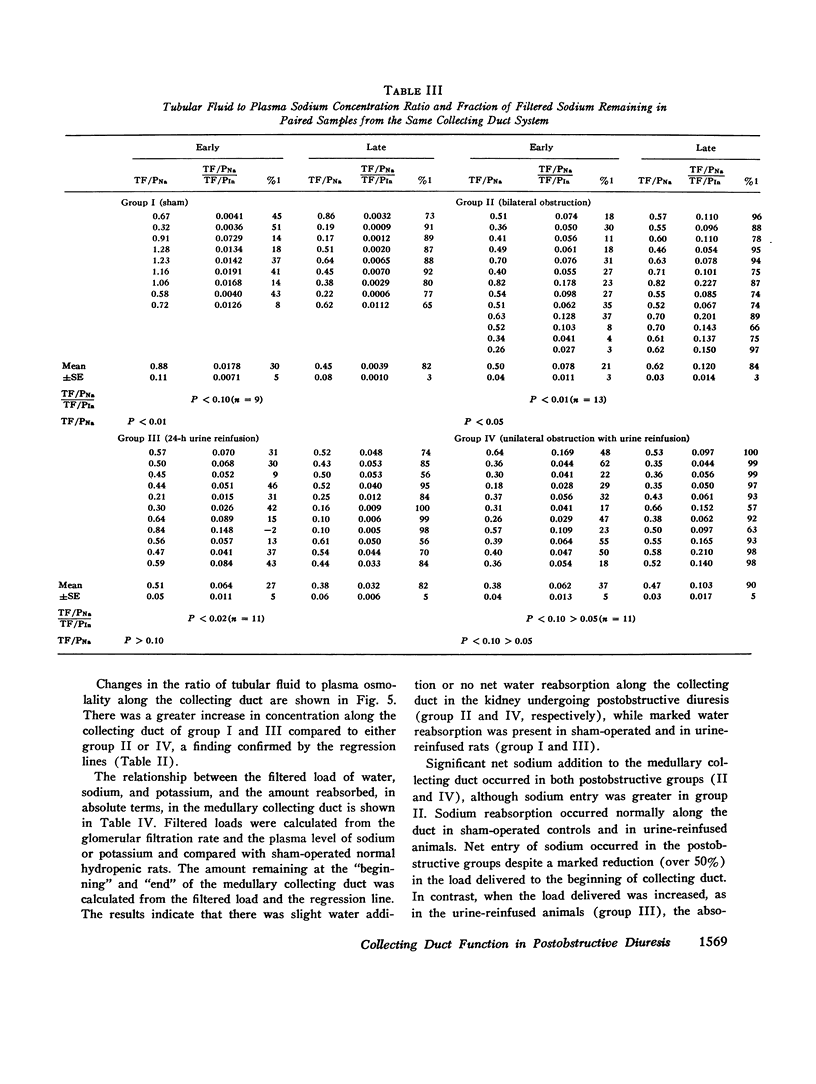
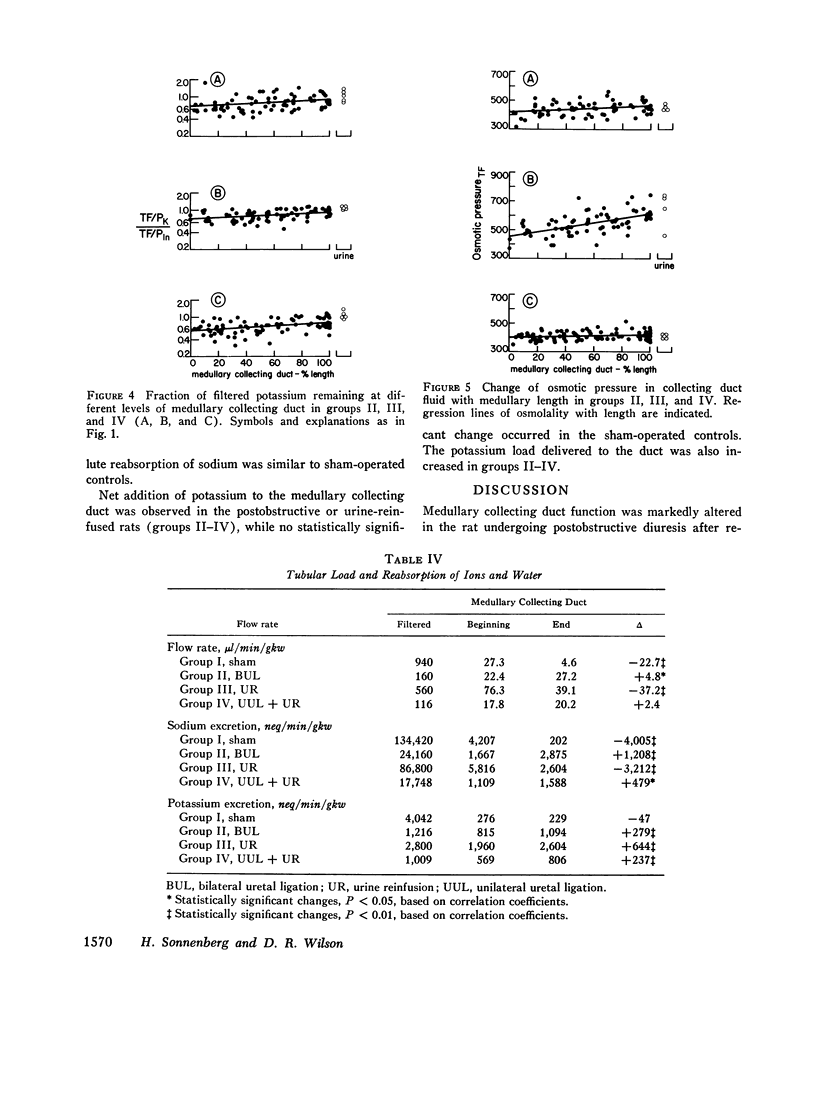
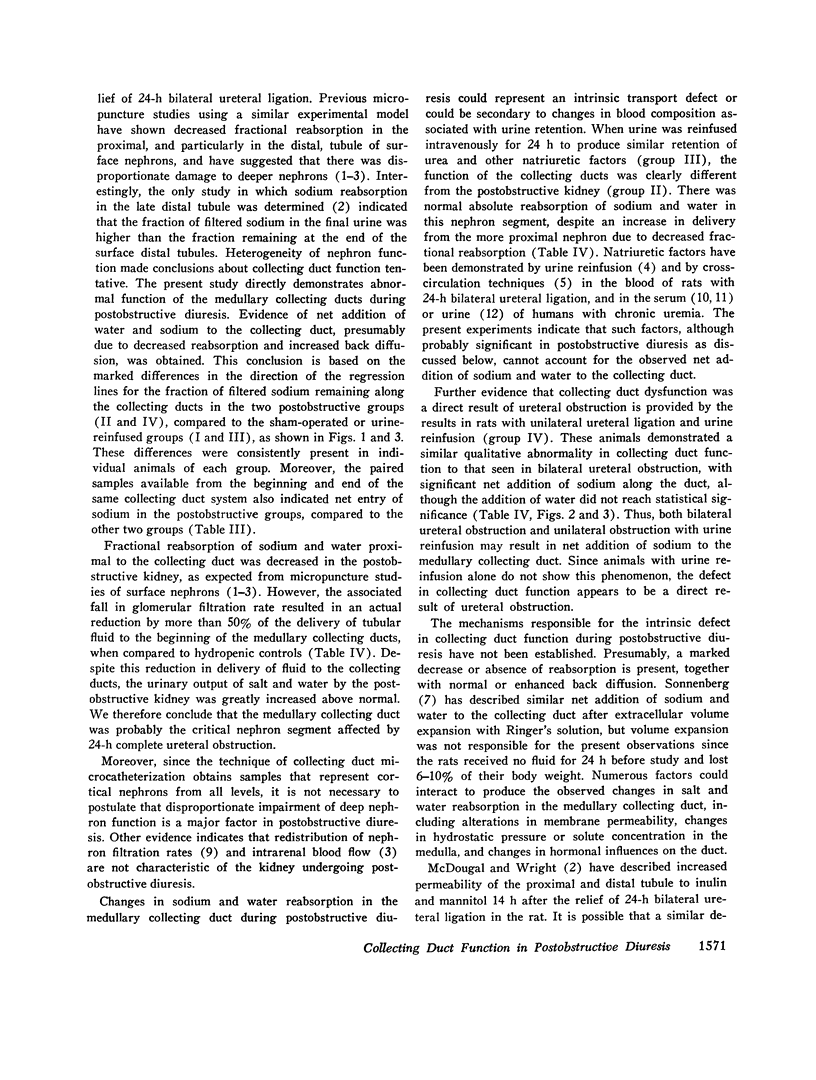
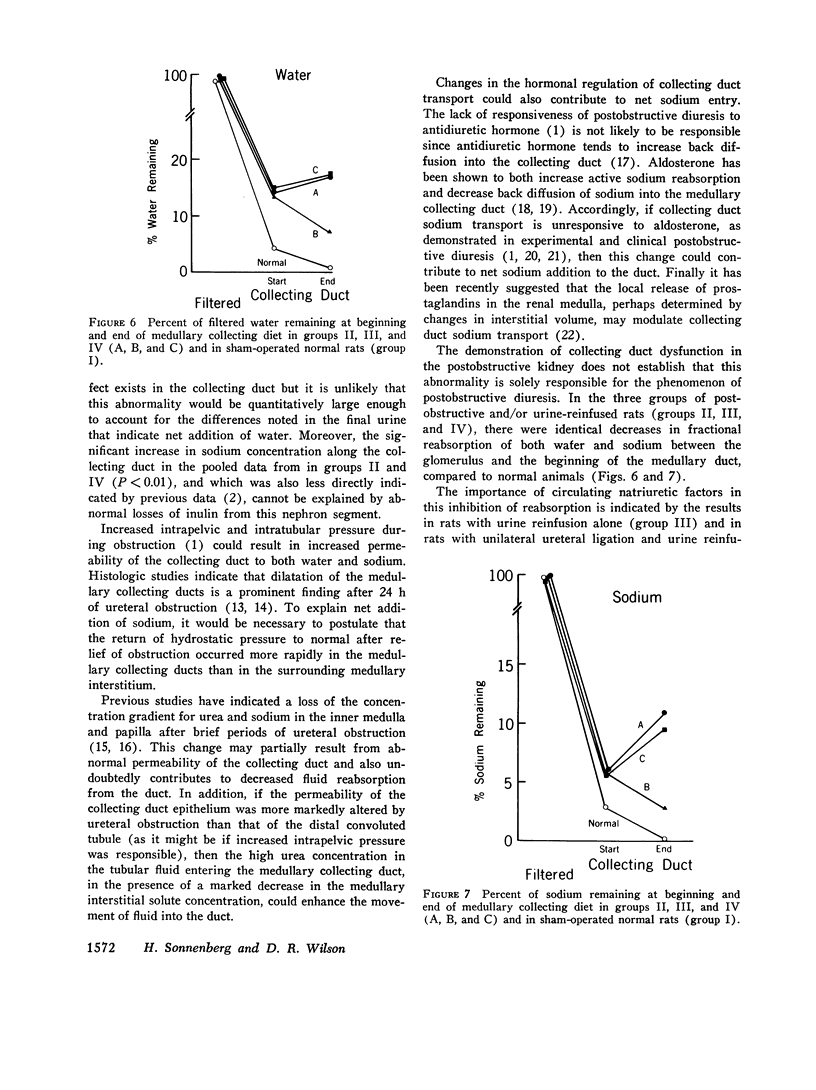
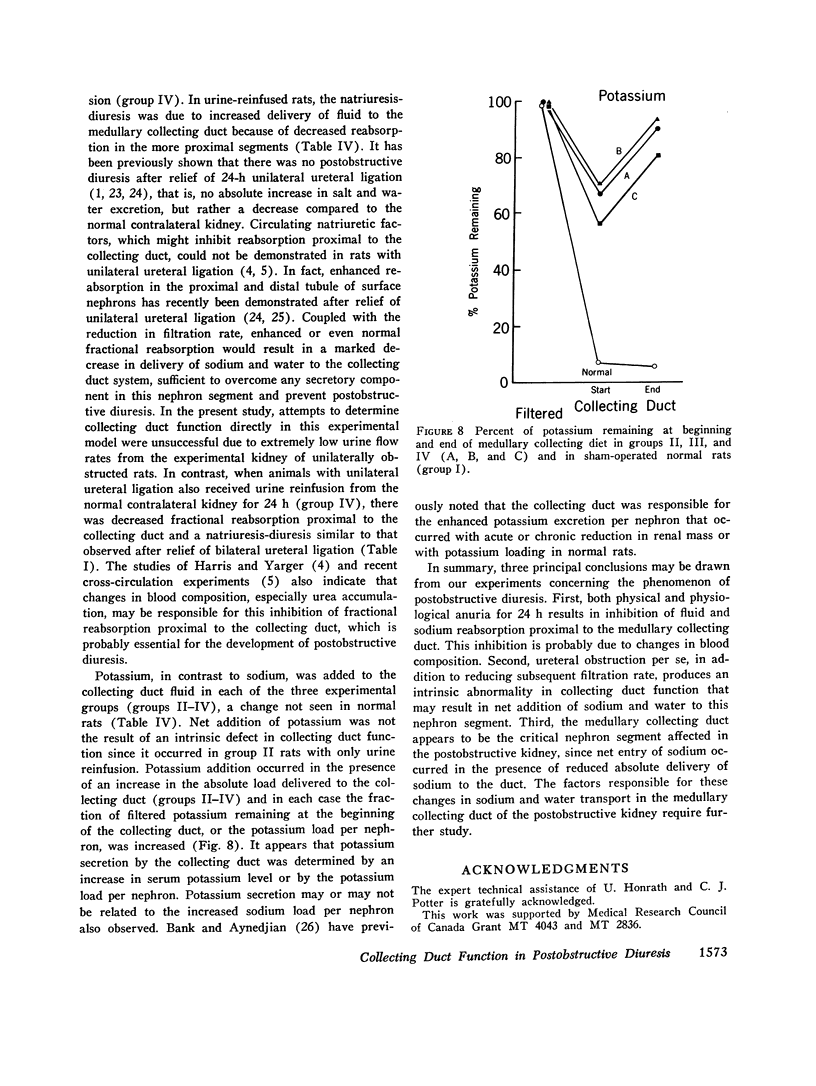
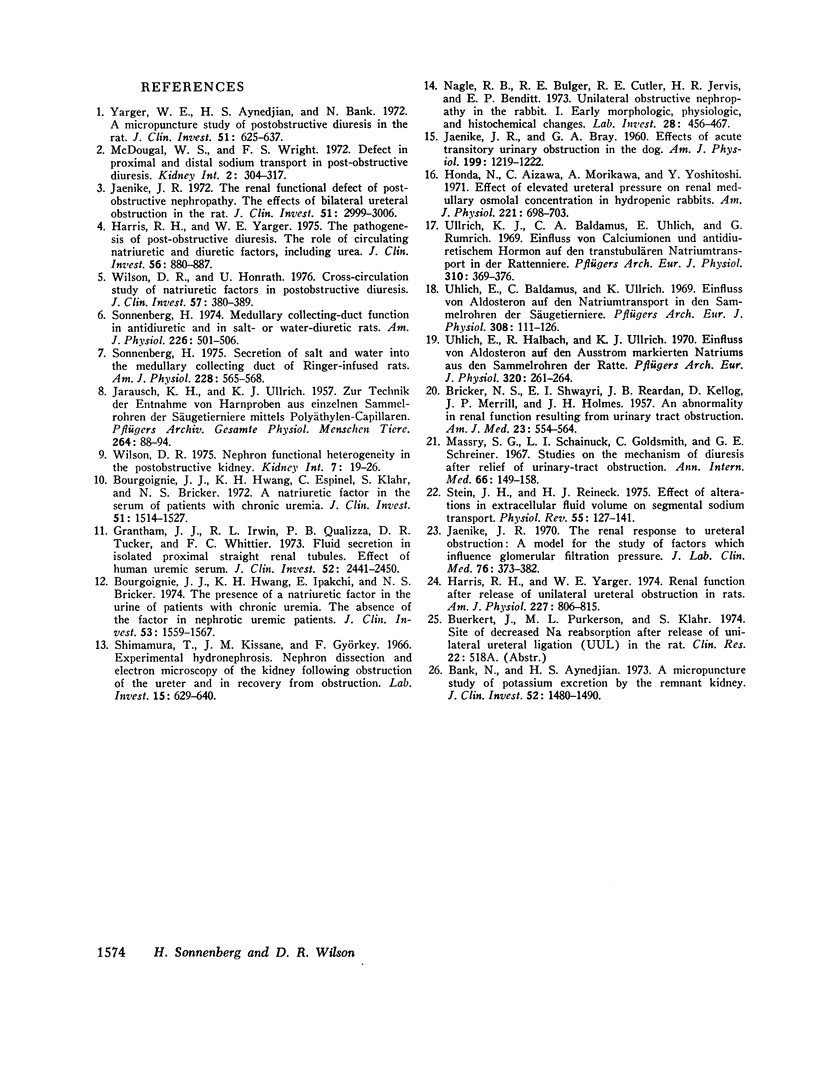
Selected References
These references are in PubMed. This may not be the complete list of references from this article.
- BRICKER N. S., SHWAYRI E. I., REARDAN J. B., KELLOG D., MERRILL J. P., HOLMES J. H. An abnormality in renal function resulting from urinary tract obstruction. Am J Med. 1957 Oct;23(4):554–564. doi: 10.1016/0002-9343(57)90226-7. [DOI] [PubMed] [Google Scholar]
- Bank N., Aynedjian H. S. A micropuncture study of potassium excretion by the remnant kidney. J Clin Invest. 1973 Jun;52(6):1480–1490. doi: 10.1172/JCI107322. [DOI] [PMC free article] [PubMed] [Google Scholar]
- Bourgoignie J. J., Hwang K. H., Espinel C., Klahr S., Bricker N. S. A natriuretic factor in the serum of patients with chronic uremia. J Clin Invest. 1972 Jun;51(6):1514–1527. doi: 10.1172/JCI106948. [DOI] [PMC free article] [PubMed] [Google Scholar]
- Bourgoignie J. J., Hwang K. H., Ipakchi E., Bricker N. S. The presence of a natriuretic factor in urine of patients with chronic uremia. The absence of the factor in nephrotic uremic patients. J Clin Invest. 1974 Jun;53(6):1559–1567. doi: 10.1172/JCI107706. [DOI] [PMC free article] [PubMed] [Google Scholar]
- Grantham J. J., Irwin R. L., Qualizza P. B., Tucker D. R., Whittier F. C. Fluid secretion in isolated proximal straight renal tubules. Effect of human uremic serum. J Clin Invest. 1973 Oct;52(10):2441–2450. doi: 10.1172/JCI107435. [DOI] [PMC free article] [PubMed] [Google Scholar]
- Harris R. H., Yarger W. E. Renal function after release of unilateral ureteral obstruction in rats. Am J Physiol. 1974 Oct;227(4):806–815. doi: 10.1152/ajplegacy.1974.227.4.806. [DOI] [PubMed] [Google Scholar]
- Harris R. H., Yarger W. E. The pathogenesis of post-obstructive diuresis. The role of circulating natriuretic and diuretic factors, including urea. J Clin Invest. 1975 Oct;56(4):880–887. doi: 10.1172/JCI108167. [DOI] [PMC free article] [PubMed] [Google Scholar]
- Honda N., Aizawa C., Morikawa A., Yoshitoshi Y. Effect of elevated ureteral pressure on renal medullary osmolal concentration in hydropenic rabbits. Am J Physiol. 1971 Sep;221(3):698–703. doi: 10.1152/ajplegacy.1971.221.3.698. [DOI] [PubMed] [Google Scholar]
- JAENIKE J. R., BRAY G. A. Effects of acute transitory urinary obstruction in the dog. Am J Physiol. 1960 Dec;199:1219–1222. doi: 10.1152/ajplegacy.1960.199.6.1219. [DOI] [PubMed] [Google Scholar]
- JARAUSCH K. H., ULLRICH K. J. Zur Technik der Entnahme von Harnproben aus einzelnen Sammelrohren der Säugetierniere mittels Polyäthylen-Capillaren. Pflugers Arch. 1957;264(1):88–94. doi: 10.1007/BF00412575. [DOI] [PubMed] [Google Scholar]
- Jaenike J. R. The renal functional defect of postobstructive nephyropathy. The effects of bilateral ureteral obstruction in the rat. J Clin Invest. 1972 Dec;51(12):2999–3006. doi: 10.1172/JCI107127. [DOI] [PMC free article] [PubMed] [Google Scholar]
- Jaenike J. R. The renal response to ureteral obstruction: a model for the study of factors which influence glomerular filtration pressure. J Lab Clin Med. 1970 Sep;76(3):373–382. [PubMed] [Google Scholar]
- Massry S. G., Schainuck L. I., Goldsmith C., Schreiner G. E. Studies on the mechanism of diuresis after relief of urinary-tract obstruction. Ann Intern Med. 1967 Jan;66(1):149–158. doi: 10.7326/0003-4819-66-1-149. [DOI] [PubMed] [Google Scholar]
- McDougal W. S., Wright F. S. Defect in proximal and distal sodium transport in post-obstructive diuresis. Kidney Int. 1972 Dec;2(6):304–317. doi: 10.1038/ki.1972.114. [DOI] [PubMed] [Google Scholar]
- Nagle R. B., Bulger R. E., Cutler R. E., Jervis H. R., Benditt E. P. Unilateral obstructive nephropathy in the rabbit. I. Early morphologic, physiologic, and histochemical changes. Lab Invest. 1973 Apr;28(4):456–467. [PubMed] [Google Scholar]
- Shimamura T., Kissane J. M., Györkey F. Experimental hydroneophrosis. Nephron dissection and electron microscopy of the kidney following obstruction of the ureter and in recovery from obstruction. Lab Invest. 1966 Mar;15(3):629–640. [PubMed] [Google Scholar]
- Sonnenberg H. Medullary collecting-duct function in antidiuretic and in salt- or water-diuretic rats. Am J Physiol. 1974 Mar;226(3):501–506. doi: 10.1152/ajplegacy.1974.226.3.501. [DOI] [PubMed] [Google Scholar]
- Sonnenberg H. Secretion of salt and water into the medullary collecting duct of Ringer-infused rats. Am J Physiol. 1975 Feb;228(2):565–568. doi: 10.1152/ajplegacy.1975.228.2.565. [DOI] [PubMed] [Google Scholar]
- Stein J. H., Reineck H. J. Effect of alterations in extracellular fluid volume on segmental sodium transport. Physiol Rev. 1975 Jan;55(1):124–141. doi: 10.1152/physrev.1975.55.1.127. [DOI] [PubMed] [Google Scholar]
- Uhlich E., Baldamus C. A., Ullrich K. J. Einfluss von Aldosteron auf den Natriumtransport in den Sammelrohren der Säugetierniere. Pflugers Arch. 1969;308(2):111–126. doi: 10.1007/BF00587019. [DOI] [PubMed] [Google Scholar]
- Uhlich E., Halbach R., Ullrich K. J. Einfluss von Aldosteron auf den Ausstrom markierten Natriums aus den Sammelrohren der Ratte. Pflugers Arch. 1970;320(3):261–264. doi: 10.1007/BF00587457. [DOI] [PubMed] [Google Scholar]
- Ullrich K. J., Baldamus C. A., Uhlich E., Rumrich G. Einfluss von Calciumionen und antidiuretischem Hormon auf den transtubulären Natriumtransport in der Rattenniere. Pflugers Arch. 1969;310(4):369–376. doi: 10.1007/BF00587245. [DOI] [PubMed] [Google Scholar]
- Wilson D. R., Honrath U. Cross-circulation study of natriuretic factors in postobstructive diuresis. J Clin Invest. 1976 Feb;57(2):380–389. doi: 10.1172/JCI108289. [DOI] [PMC free article] [PubMed] [Google Scholar]
- Wilson D. R. Nephron functional heterogeneity in the postobstructive kidney. Kidney Int. 1975 Jan;7(1):19–26. doi: 10.1038/ki.1975.3. [DOI] [PubMed] [Google Scholar]
- Yarger W. E., Aynedjian H. S., Bank N. A micropuncture study of postobstructive diuresis in the rat. J Clin Invest. 1972 Mar;51(3):625–637. doi: 10.1172/JCI106852. [DOI] [PMC free article] [PubMed] [Google Scholar]


